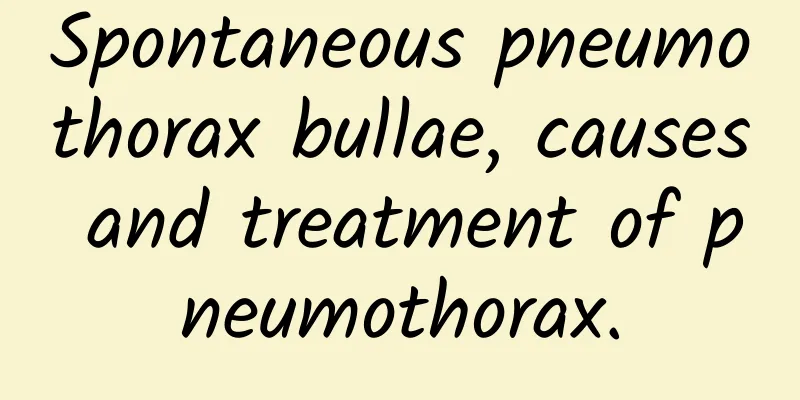What is a chickenpox infection like?

|
Chickenpox is a common symptom in children. After a child is infected with the chickenpox virus, he or she will go through an incubation period. The symptoms are not particularly obvious in the early stages. Early symptoms often cause fever and pain, and then the rash period comes. During the rash period, care must be strengthened. Chickenpox is relatively self-limiting. As long as emphasis is placed on nourishment and care, the child will be able to safely pass through the chickenpox infection period. What is a chickenpox infection like? 1. Incubation period The incubation period is approximately 12 to 21 days, with an average of 14 days. 2. Early symptoms Infants and young children often have no early symptoms. Older children or adults may have fever, headache, general malaise, poor appetite and upper respiratory tract symptoms, and the rash may appear 1 to 2 days later. A prodromal rash may occasionally occur. 3. Rash period The rash appears at the same time as the fever or 1 to 2 days later, with the following characteristics: (1) The number of rashes is large, ranging from hundreds to thousands. (2) It first occurs on the trunk and head, and then spreads to the entire body. Its distribution is centripetal, with more cases on the hairline, chest and back, less cases on the limbs and face, and occasionally on the palms and soles of feet. Rashes may also occur on the mucous membranes of the nose, pharynx, oral cavity, vulva, etc. (3) The rash is often oval in shape, 3-5 mm in diameter, surrounded by a red halo, and the blisters are superficial and easy to break. The rash develops rapidly, starting as erythema, which turns into papules within a few hours and then forms blisters. The skin feels itchy during herpes and then dries into scabs. This process sometimes only takes 6 to 8 hours. If there is no infection, the scabs will fall off after 1 to 2 weeks, and generally no scars will be left. (4) The rash appears in batches, and macules, papules, blisters and scabs may be seen simultaneously in the same area. (5) Atypical varicella often develops when there are causes such as immune deficiency, coagulation disorder and secondary infection. The rash is called bullous type if it is fused and can reach a diameter of 2-7cm. It is prone to secondary Staphylococcus aureus infection and sepsis and death. The herpes is hemorrhagic, and the subcutaneous and mucous membrane ecchymoses are the hemorrhagic type, which may be accompanied by bleeding in other parts of the body. Large areas of skin necrosis and severe systemic poisoning symptoms are called necrotic type. The spread of lesions to involve internal organs is called disseminated type, which is more common in immunocompromised patients. (6) Varicella infection during the first three months of pregnancy can cause congenital malformations in the fetus, which is called congenital varicella syndrome. Western medicine treatment methods (1) Proper care and attention to cleanliness Proper care should be given, with special attention paid to skin cleanliness to avoid bacterial contamination of the broken areas of chickenpox, avoid scratching the herpes with your hands, and prevent secondary infection. When local itching occurs, calamine lotion can be applied externally. After the herpes is broken, 1% gentian violet or antibiotic ointment should be used. (2) Antipyretics can be used when the fever is high Antipyretics can be used for high fever, but salicylic acid preparations (such as aspirin) should be avoided as much as possible. Adolescent patients can take acyclovir 800 mg orally, 5 times a day, for 5 to 7 days; valacyclovir (valaciclovir) 300 mg, 2 times a day, for 7 days; or penciclovir 50 mg, once every 8 hours, for 7 days. (3) Pruritus can be treated with antihistamines such as chlorpheniramine tablets, 4 mg/time, 3 times/day; cyproheptadine tablets, 4 mg/time, 3 times/day. (4) In case of secondary infection, oral antibiotics such as medetomidine or spiramycin should be used. (5) Severely ill patients can be given intramuscular injection of immunoglobulin 3-6 ml once a day for 3-5 consecutive times. (6) For those with secondary infection, use pustular herpes mud cream, dyshidrotic herpes mud cream or mupirocin (Bactroban) ointment. (7) Varicella keratitis can be treated with 0.1% iodine (Herpes Net) eye drops or ribavirin (Acyclovir). |
<<: Can a mite infection heal on its own?
>>: Can fungal skin infections heal on their own?
Recommend
Does tangerine peel relieve cough?
Tangerine peel has a certain cough-relieving effe...
Can I sleep with my partner during the 40th day of pregnancy?
Pregnancy is a very important event in the life o...
What are the symptoms of cholecystitis? Early warning of cholecystitis
The function of the gallbladder is to store and c...
Why does my belly button feel uncomfortable?
Children are always curious about everything, esp...
Candida infection symptoms
When it comes to diseases, many people feel that ...
Can Buzhong Yiqi Pills treat insomnia?
Nowadays, many people are under great pressure, i...
Can aloe vera cure gynecological diseases?
Women’s life after marriage is definitely very ha...
Symptoms of convexity meningioma
The brain is one of the most important organs in ...
What tests are done for brain tumors
When you feel unwell, you usually choose to go to...
Is coughing up white phlegm caused by lung cold or lung heat?
In life, coughing is a very common physical disea...
What are fat particles on the scrotum?
The most common cause of fat particles in the scr...
Calculate fetal weight based on uterine height and abdominal circumference
We all know that the physical health of pregnant ...
Ginger and garlic for numbness in hands and feet
Numbness of hands and feet is a disease in the hu...
My calves itch so badly that they bleed when scratched. What should I do?
Itchy calves are quite common in life and there a...
How to eat Polygonatum odoratum best
What is the best way to eat Polygonatum? Phlegm a...









